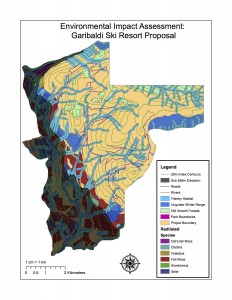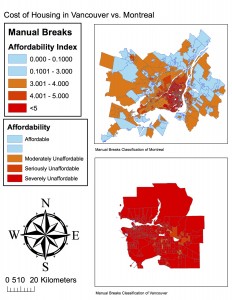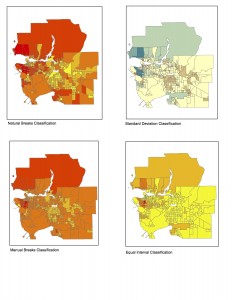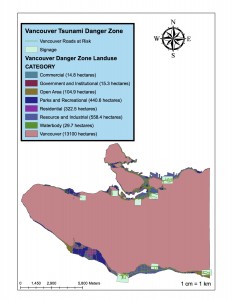
To the Northland Properties and Aquilini Investment Group of Vancouver,
The Garibaldi at Squamish projects is a proposed ski resort in the Brohm Ridge, which is 45km south of Whistler and 80km north of Vancouver. This environmental assessment reviews the proposed project’s merits and surveys possible locations for the site, taking into account the snowfall and the projects affects on vegetation, fish and wildlife habitat in the area. This assessment outlines the priorities the proponents need to focus on in order to proceed with the proposal. To analyze the data we gathered data from DataBC that mapped the Ungulate Winter Ranges as well as the Old Growth Management Areas. This information is crucial in identifying the key hotspots in the project area that require considerable environmental care. Additional data used in this assessment includes the project boundary, the Terrestrial Ecosystem Mapping data, Digital Elevation Model, Protected Parks, the roads and the rivers. Before analyzing, some of these layers require a change in projection to ensure that all of our data properly lined up with one another. These datasets were first cropped and narrowed down to the specific project boundary to analyze the project’s direct affects. Elevation was simplified into above and below 555m elevation categories to assess areas that would require equipment to produce snow. From the Terrestrial Ecosystem Mapping layer we selected the top species threatened in the area and created a map of the red-listed areas. Combining the elevation range along with the river layers we isolated the parts of the rivers that are below 555m of elevation. These areas are considered to be more likely to be fish bearing and should be given a higher priority when considering conservatory measures. To demonstrate the riparian areas that are essential for these fishing communities, buffer zones were made around these rivers. The above 555m elevation rivers were buffered by 50m on either side while below 555m elevation rivers were buffered with 100m on either side. These different layers provide a representation of the environmental areas of concern for the project. It was calculated that the combined percentage of the project area that consists of red-listed ecosystems (24.8%), ungulate habitat (.8%), old growth forests (6.8%) and fish habitats (30.1%) equaled 55.6%.
In our opinion, the two greatest environmental concerns to project development would be selecting a suitable area to build both the resort and the ski slopes. Ideally, the resort would be built along an already established road, but would not interfere with the ungulate habitats or old growth forests. Additionally the resort should avoid the riparian zones as runoff and pollution may be an issue. Ski slopes should also be located in areas that don’t interfere with the rivers and should receive lots of snow. Although a large percentage of the area represents the different sections for concern is important to consider that a large percentage of these hotspots fall below the 555m elevation level, with large areas of open land available at higher elevations. These areas would be well suited for the slopes and the resort. They would receive plenty of snow, and focusing on constructing in this area would mitigate any affects to the environment. With careful planning and consideration of the key environmental habitats, a ski resort can be constructed that has minimal affects on the environment, meets conditions for proper slopes and be easily accessible to the general public.
When evaluating the above project proposal that was drafted with the goal of supporting the Ski Resort in mind, I realized that my own personal views conflicted with what I was tasked with. While I do agree that another ski resort would be great for our economy and for local snowboarders and skiers, I feel that I don’t have the knowledge to fully support what was written in the memo. While it is evident that a large portion of the project area is at a high enough elevation to receive sufficient snowfall I’m not confident that there is enough open space in the area for construction of the slopes to occur without some damage occurring to the local environment.



